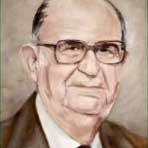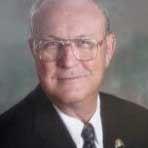Discover Rainbow
history
Quick Review
Emerging as a sleeping giant in Etowah County is one of the first settlements now known as Rainbow City. Settled in the early 1800’s it is now one of the fastest growing areas in the county with many new business, industries, and homes springing up along its major thoroughfares. Rainbow City extends from the city of Gadsden on the north to the county line on the south and east to the Coosa River.
About rainbow city
Rainbow City was named after U.S. Highway 411, called Rainbow Drive, which runs through the middle of our city. Some of our older citizens say it was named after Alabama’s Rainbow Division that fought in World War I.
As early as 1818, families from the Carolinas and Georgia began to migrate to the area and homestead land near the Coosa River. Between 1818 and 1830 landowners were the families of Edmond Jones; James Brown; John Choat; Mark Phillips; James Lister; Berry Dodd; Henry B. Boyd; John H. Garrett and Samuel Walker. Later settlers included the Gilbert; Dunaway; Littlefield; McDaniel; Lee; Best; Wright; Newton; Dismukes; Gilliland; and Sheffield families.

Hernando DeSoto’s troops were the first visitors to the area in 1540 and today a bridge now stands where the Pensacola Trading Path crossed the Coosa River. A paved highway now traces the trail that was cut from Nashville to Horseshoe Bend by Andrew “Old Hickory” Jackson on his way to fight the Creek Indians in a battle known today as the Battle of Horseshoe Bend.
Known in the beginning as Coosa Bend, it was later called Morgan’s Cross Road. It was located at the intersection of the Gadsden-Ashville Road and Gilbert’s Ferry Road. The land was passed from Edmond Jones to his son Clayton, who never married. When he died, the land passed to his sister, Luvica Morgan, who was also the wife of William Morgan.
Knowing the importance of education, John Sheffield Jones, the grandson of Edmond Jones, an original settler, donated $1,000 and the land for the construction of the first John S. Jones Elementary School. Later, John S. Jones burned to the ground and a new elementary school was built and serves the Rainbow City area today. Rainbow Middle School and the Westbrook Christian School, also serve the Rainbow City students today.
History

Rainbow City was incorporated on May 29, 1950. W. R. Smith was the city’s first mayor.

Walter B. Majors served as mayor from June 4, 1963 to October 4, 1964

The former mayor, Sue L. Glidewell, one of Alabama’s first women mayors, served as mayor for 24 years. She retired from the mayor’s office in 2004.

Terry John Calhoun was elected as Mayor from 2004-2020.

We have the oldest church in Etowah County called Old Harmony Baptist Church. On Saturday, April 2, 1831 the church was organized at the Harmony Meeting House. Thomas Morgan served as the first pastor. A few years later, the first Baptist association was organized by Rev. John Gilliland. Harmony was one of the first five members in the association.
The adjoining cemetery, Old Harmony Cemetery, has been declared a historic landmark because of its unique features. This cemetery has black and white slaves buried in it, Indians, single and double interment, and most of the tombstones have poems and writings on them. They say one man is buried crosswise because he lived crosswise with the world. You can visit Old Harmony Cemetery online.
Local Links
Economic Development Partnership of Alabama
Alabama Industrial Development Training Institute
Alabama Department of Public Safety
Alabama Department of Revenue
Alabama Department of Industrial Relations
Alabama Department of Environmental Management
Etowah County
City of Rainbow City
City of Southside
City of Gadsden
City of Glencoe
City of Attalla
Chamber of Commerce
Gadsden-Etowah County Industrial Development Authority
Tourism Board
Cultural Arts Center
United Way
Neely Henry Lake Association
Gadsden Greeters – Welcome Newcomers
Rainbow City Lions Club